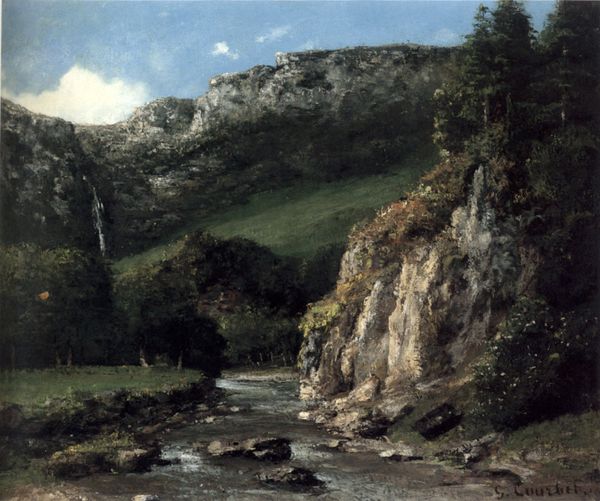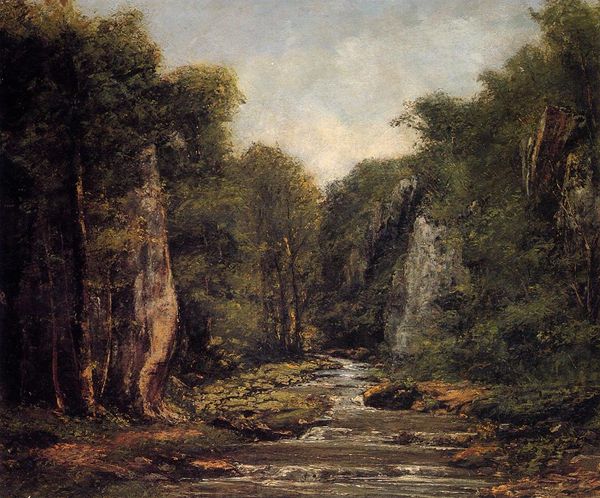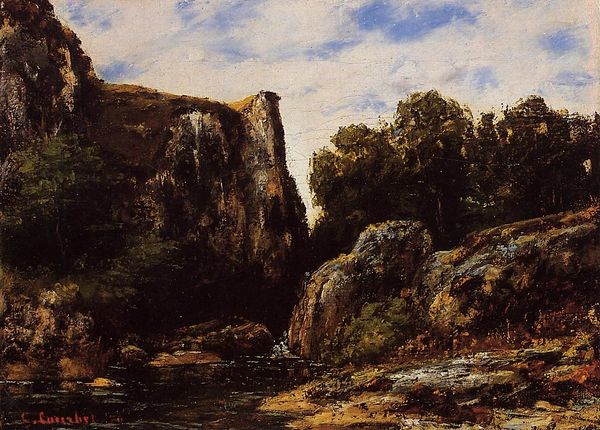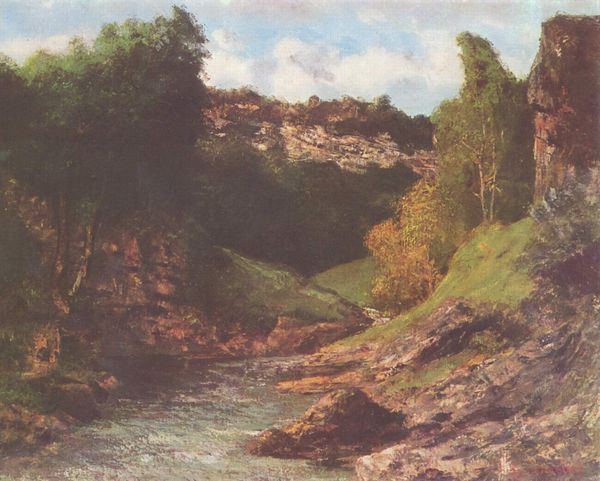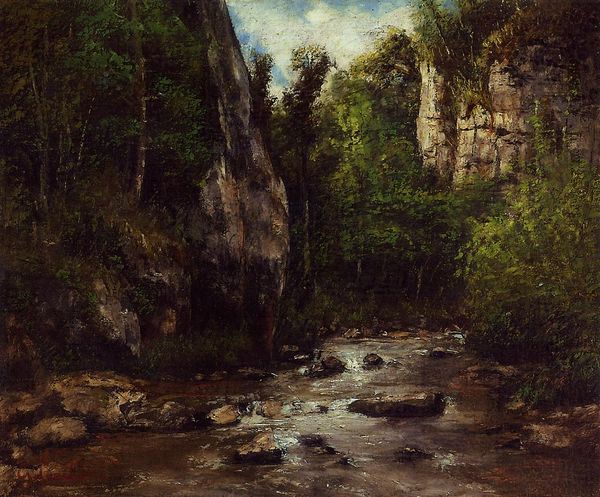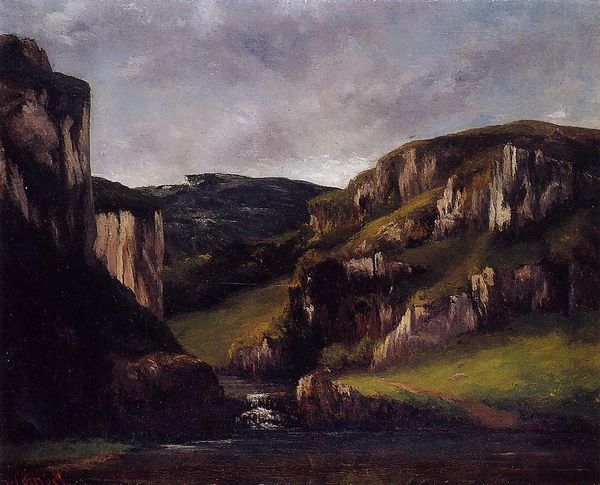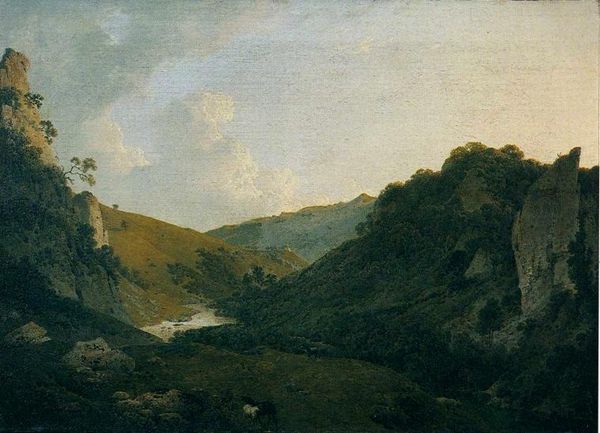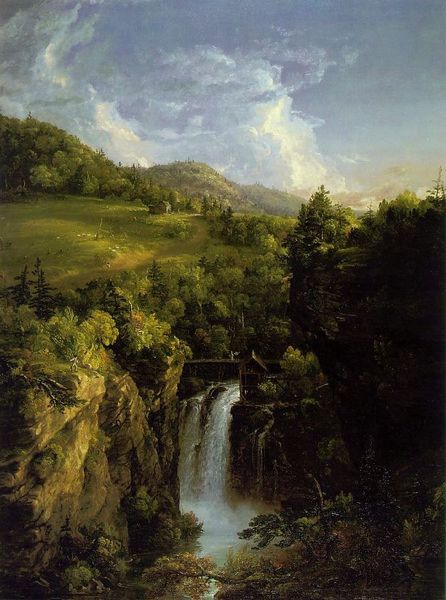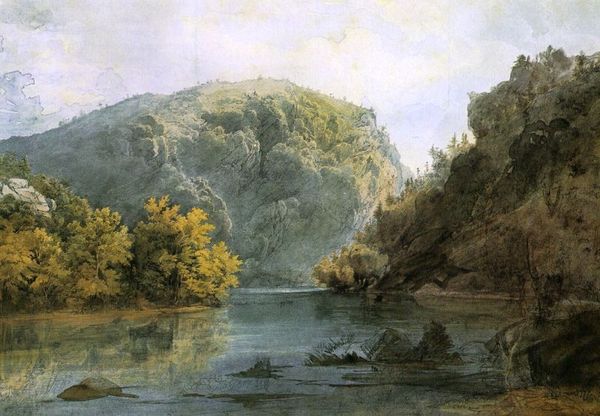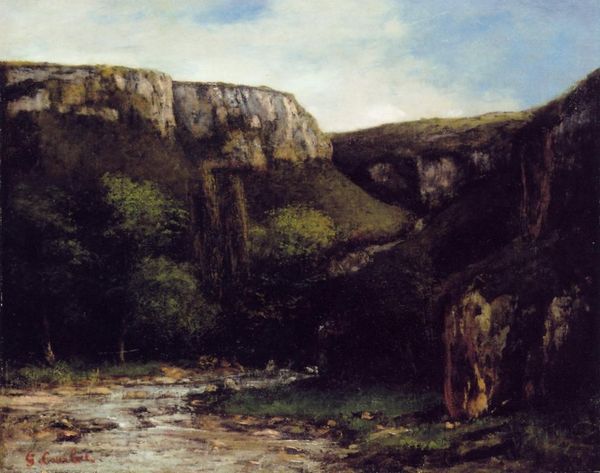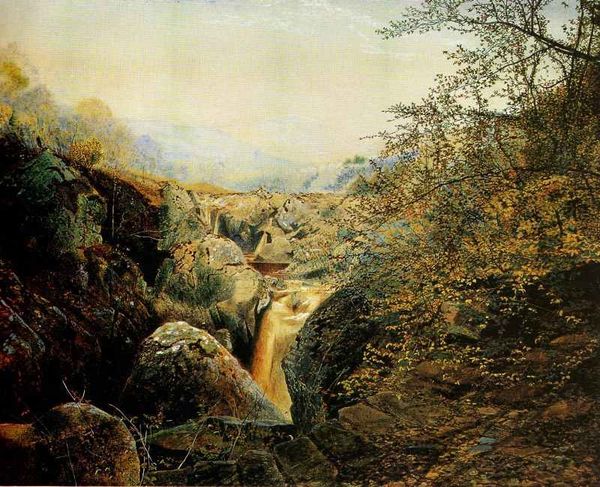
The Source among the Rocks of the Doubs 1871
0:00
0:00
gustavecourbet
Musée des Beaux-Arts et d'archéologie de Besançon, Besançon, France
Copyright: Public domain
Curator: This is Gustave Courbet’s “The Source among the Rocks of the Doubs,” completed in 1871. It’s currently housed at the Musée des Beaux-Arts et d'archéologie de Besançon in France. Editor: Right away, it feels so...grounded. The solid, almost bulky, presence of those rocks. It's like a visual exhale. Curator: Certainly. Courbet was a key figure in the Realist movement, after all. This work can be examined in the context of his political views, particularly during and after the Franco-Prussian War. His championing of ordinary subjects—landscapes free from idealization—aligns with a democratic impulse that questioned established power structures. Editor: Hmm, I’m not sure about “democratic impulse.” My read is the artist saw something in nature more true than social structures...something beyond politics. Did you notice, though, the water cuts like a stream of light through the scene. It almost gives life to everything, doesn't it? Curator: Indeed. Courbet's treatment of water is quite striking; it offers a vital contrast to the stillness of the rocks. Water here represents more than just an element of the scenery; its presence suggests ideas concerning transformation and movement, notions aligned with feminist philosophies concerning the fluidity of identity and societal conventions. The painting itself reflects larger discourses within environmental philosophy as well. The connection between humanity and nature, with water acting as the crucial point of interconnectedness, speaks volumes. Editor: "Interconnectedness"...I think it has a sense of personal discovery. Like he stumbled upon a place where he felt most truly himself. It’s pure feeling – less theory. Less, I hate to say, baggage. The light touching those rocks... almost hallowed. Curator: But it's critical that we see such pieces as reflective of historical conditions. After the turbulent years of conflict, such natural depictions took on a new weight—symbols of enduring power beyond immediate human conflicts. We can look at this as an invitation to engage more intensely and critically with how we imagine landscape and history together, where art catalyzes questions about agency, identity, and liberation. Editor: I'd offer to leave the theorizing for the library! But seriously – think that connection, whatever *is*, in art should go beyond. What stays with you: Did this resonate *purely*, for one brief instant, that moment a landscape sings *right into* our deepest truth? That, is a rare grace. Curator: And considering Courbet’s deep commitment to plein-air painting, the very materiality of this canvas grounds the idea in labor, demanding us to connect this with physical lived reality... Editor: All things said…perhaps we meet somewhere between lived experience and something higher, yes? A spring, after all, makes you think of life bursting again... Curator: Exactly. A potent cycle—socially, environmentally, and existentially.
Comments
No comments
Be the first to comment and join the conversation on the ultimate creative platform.
